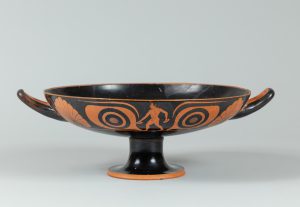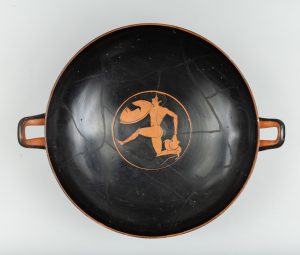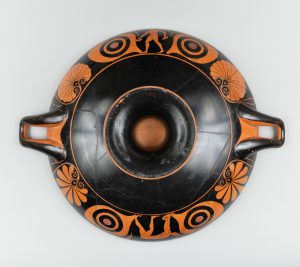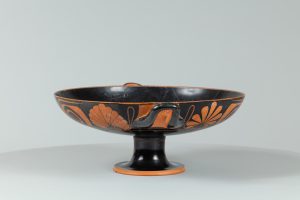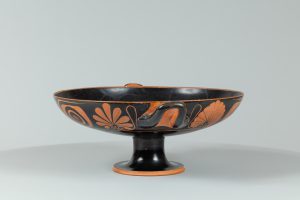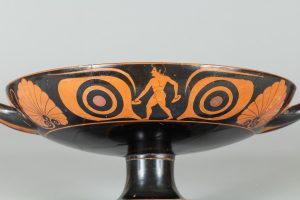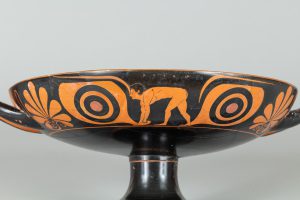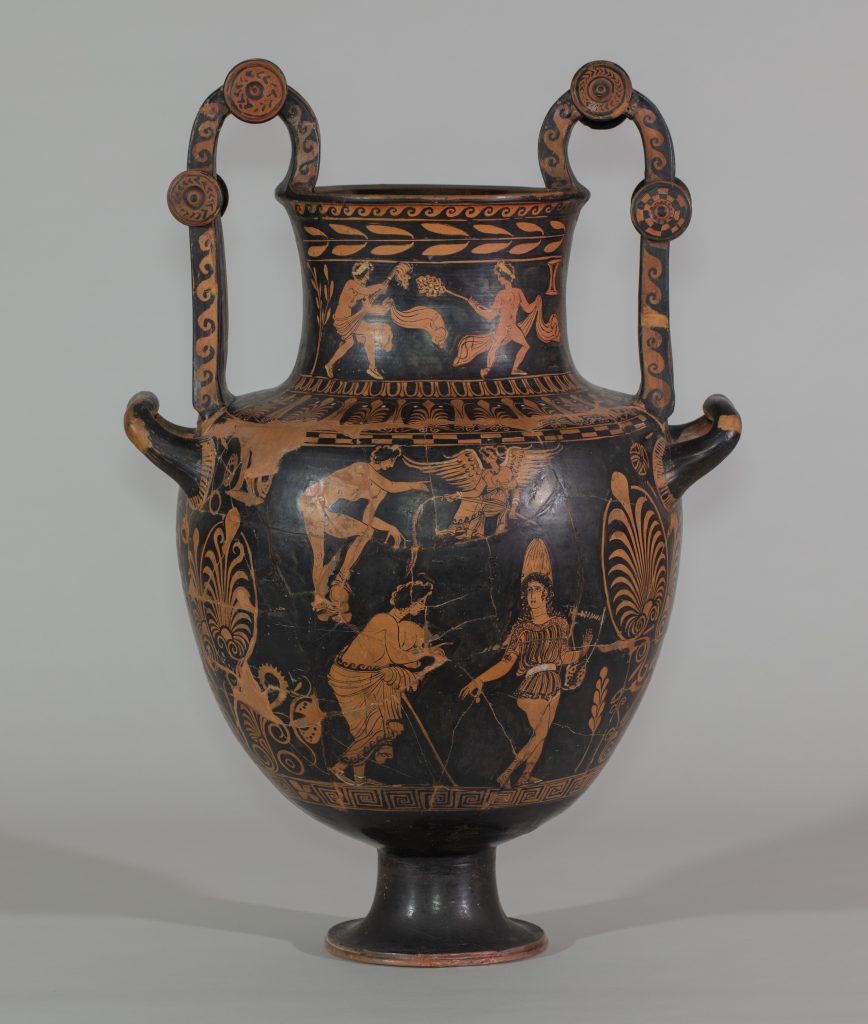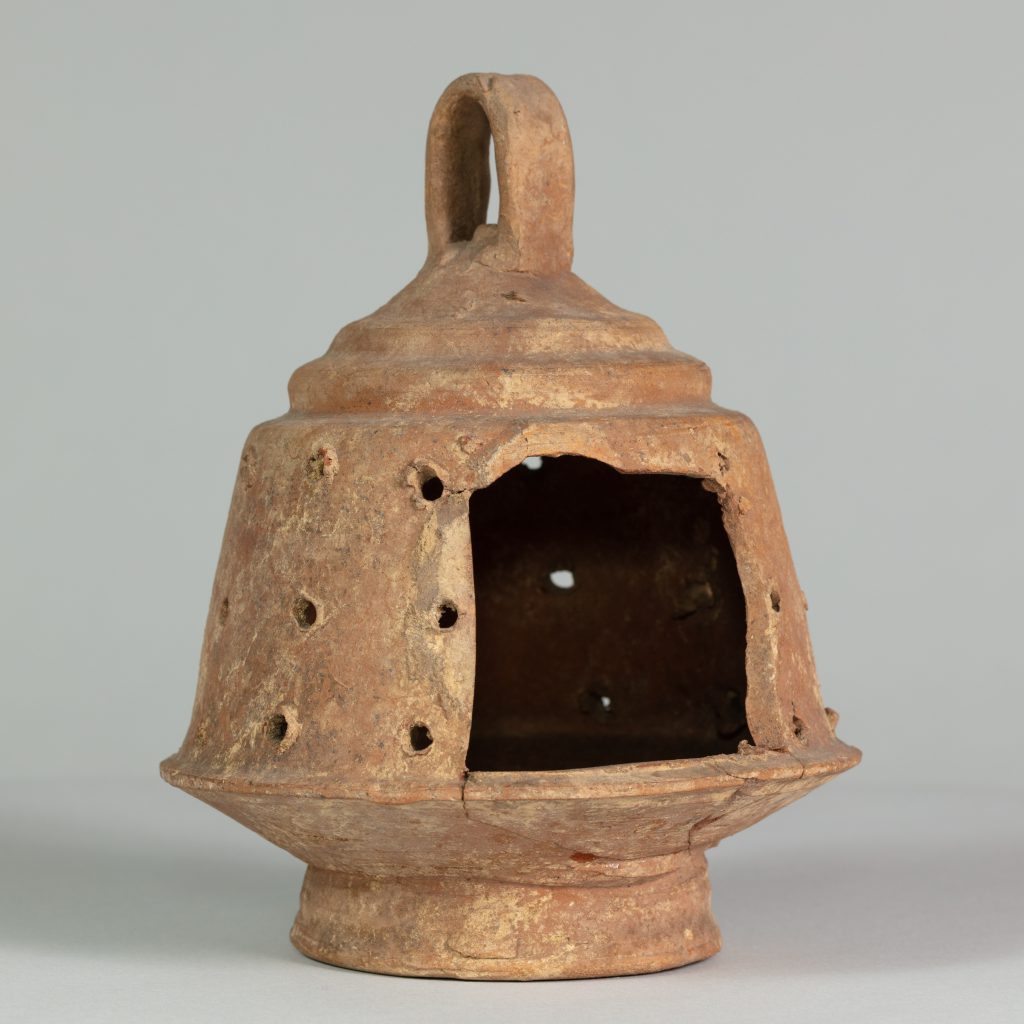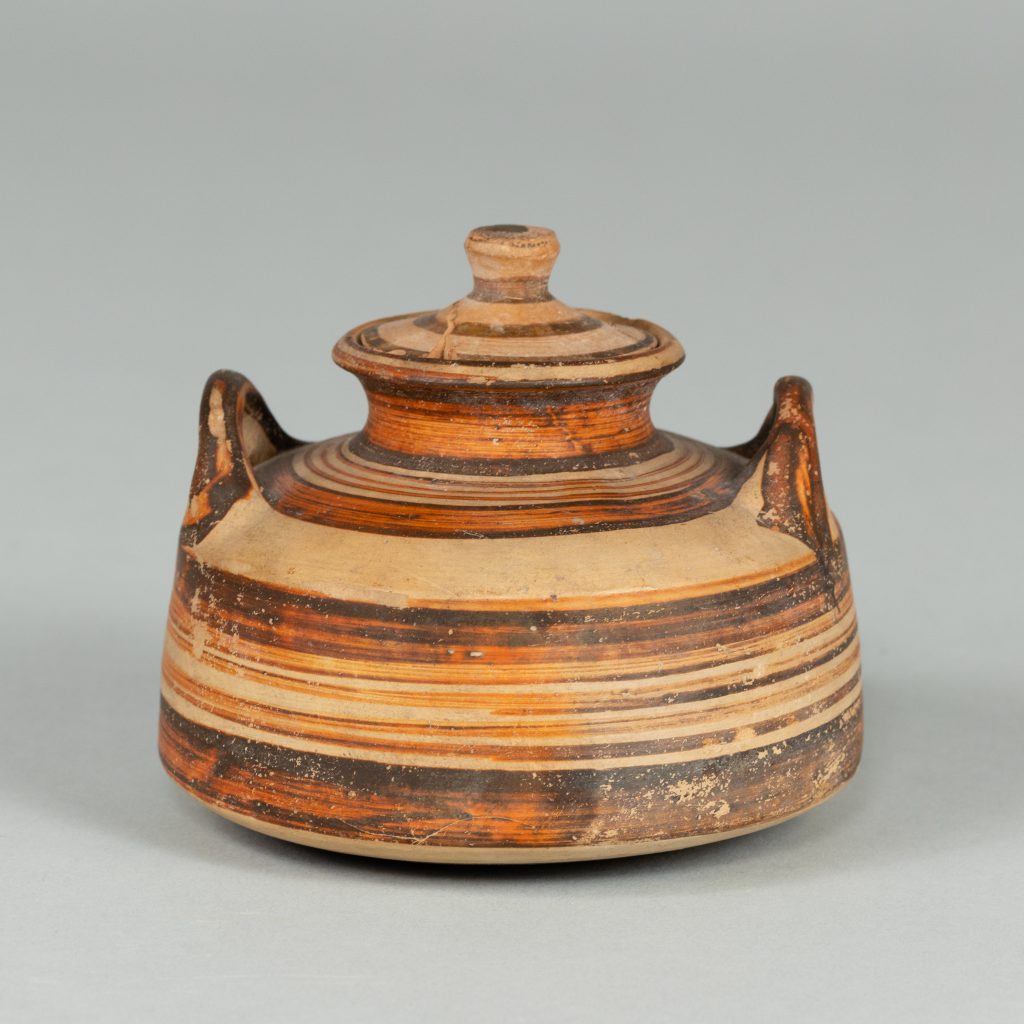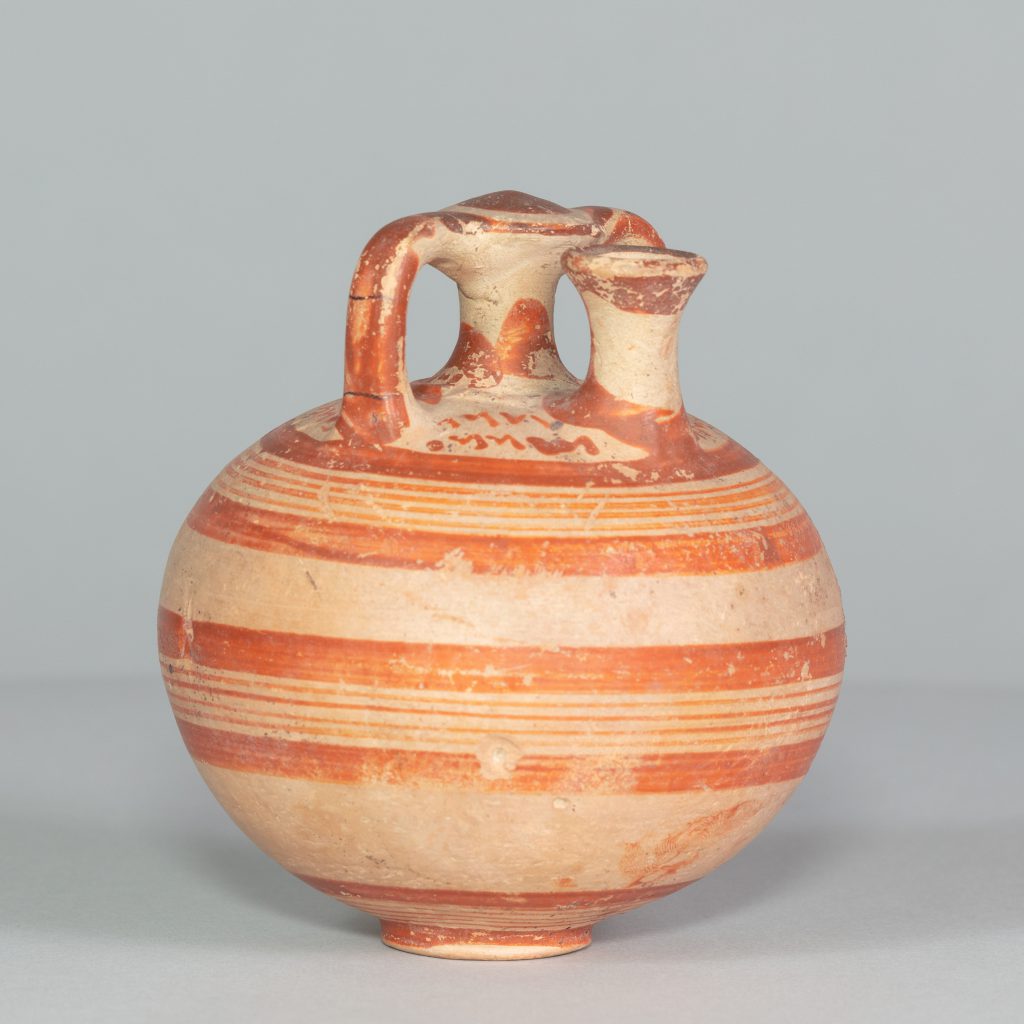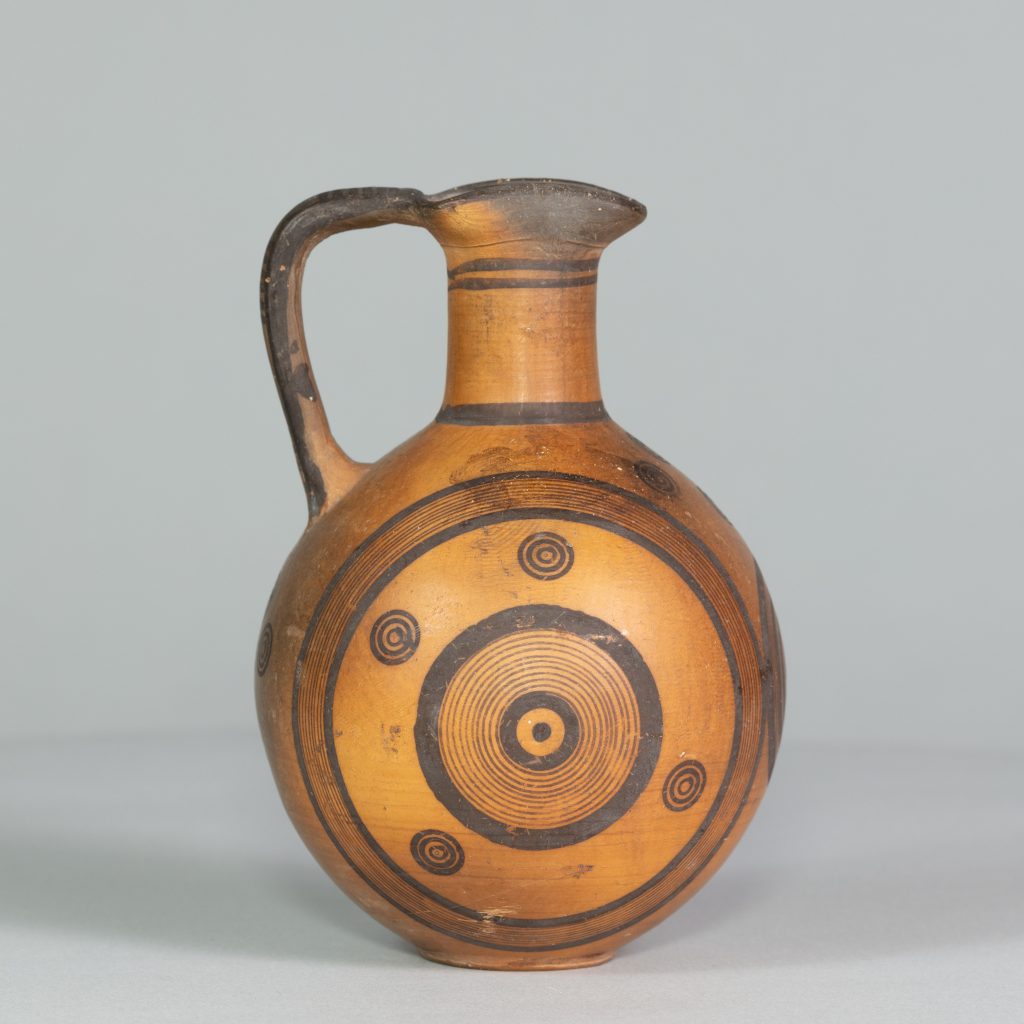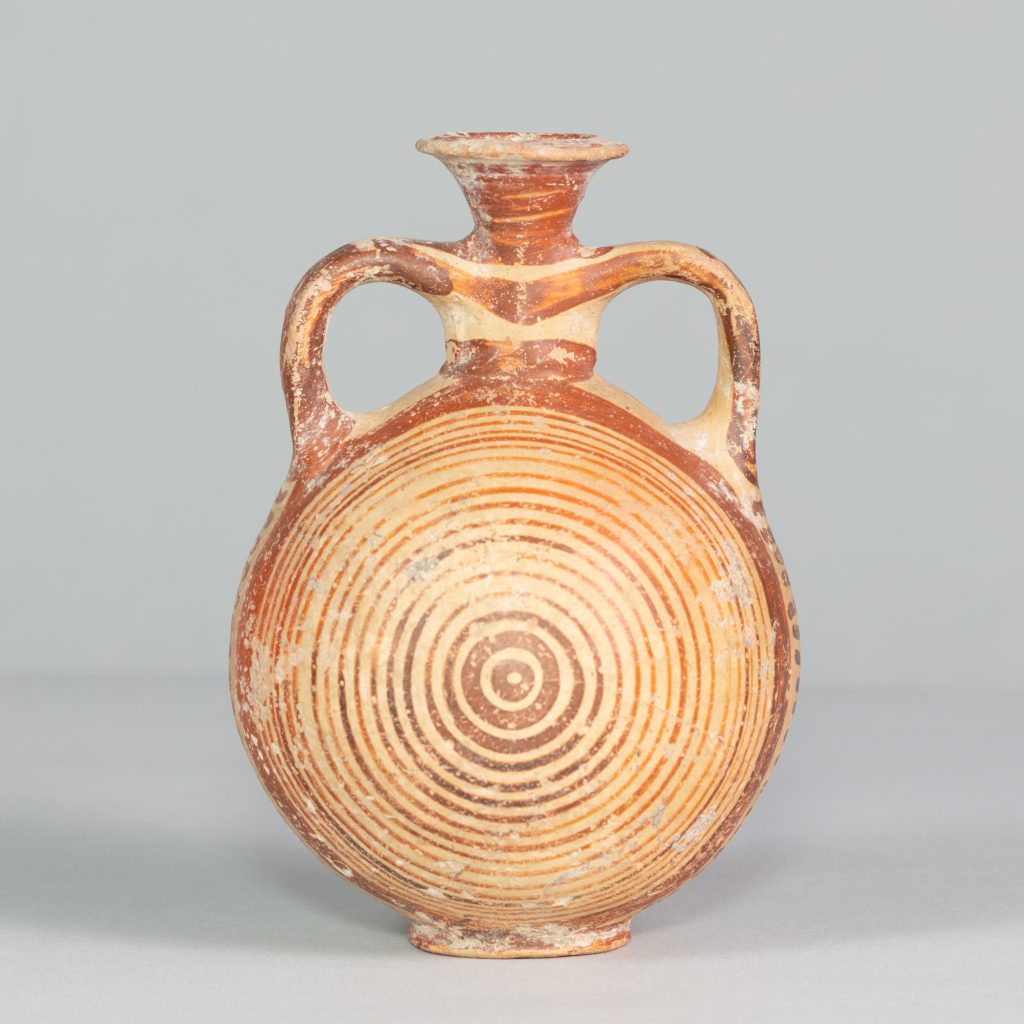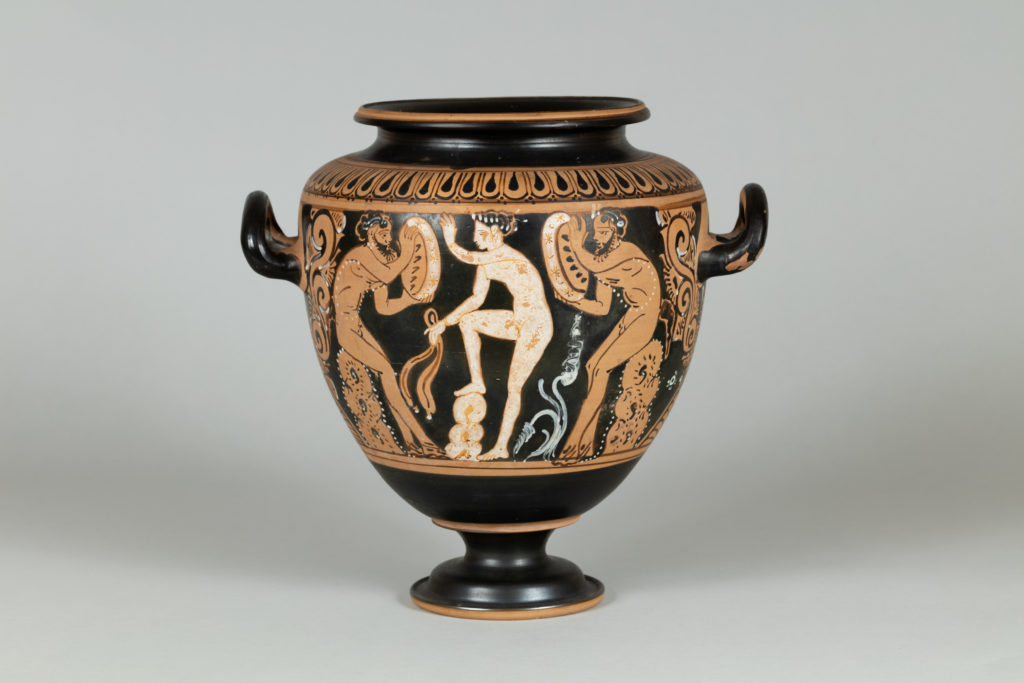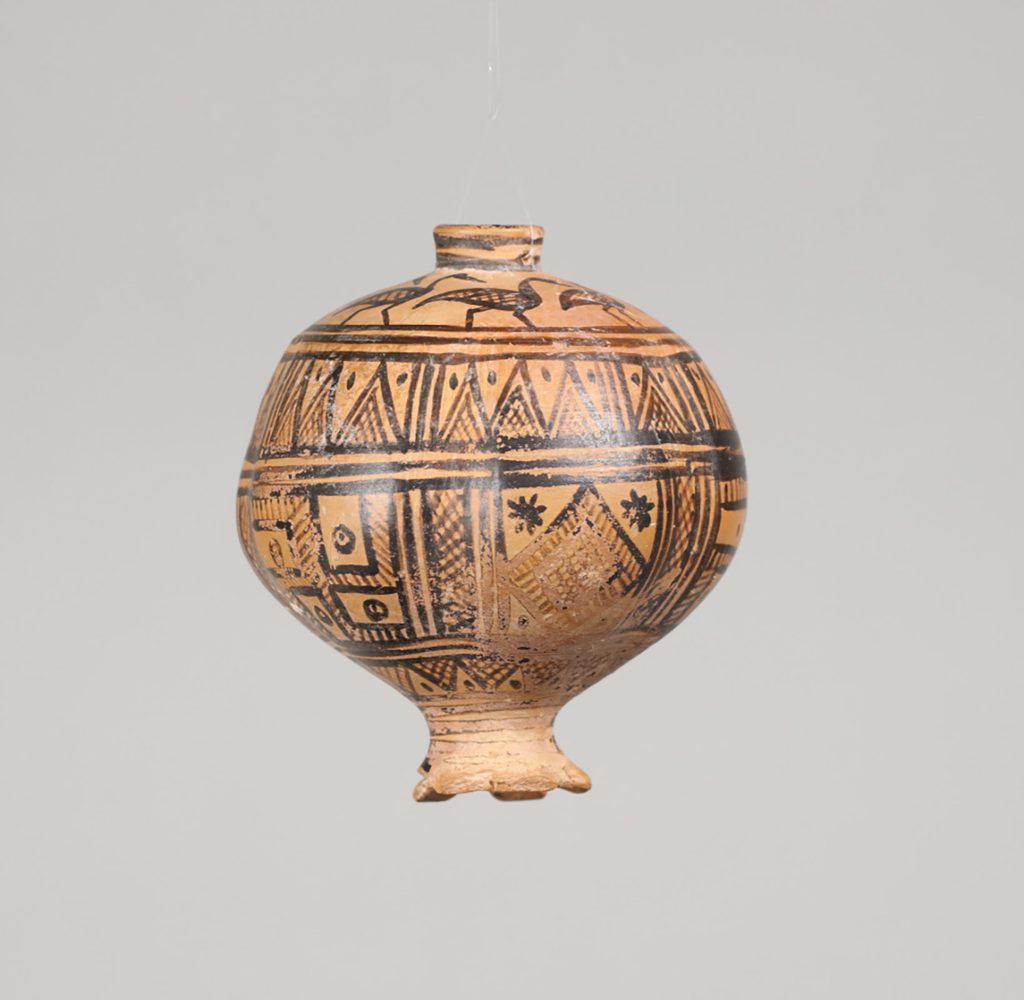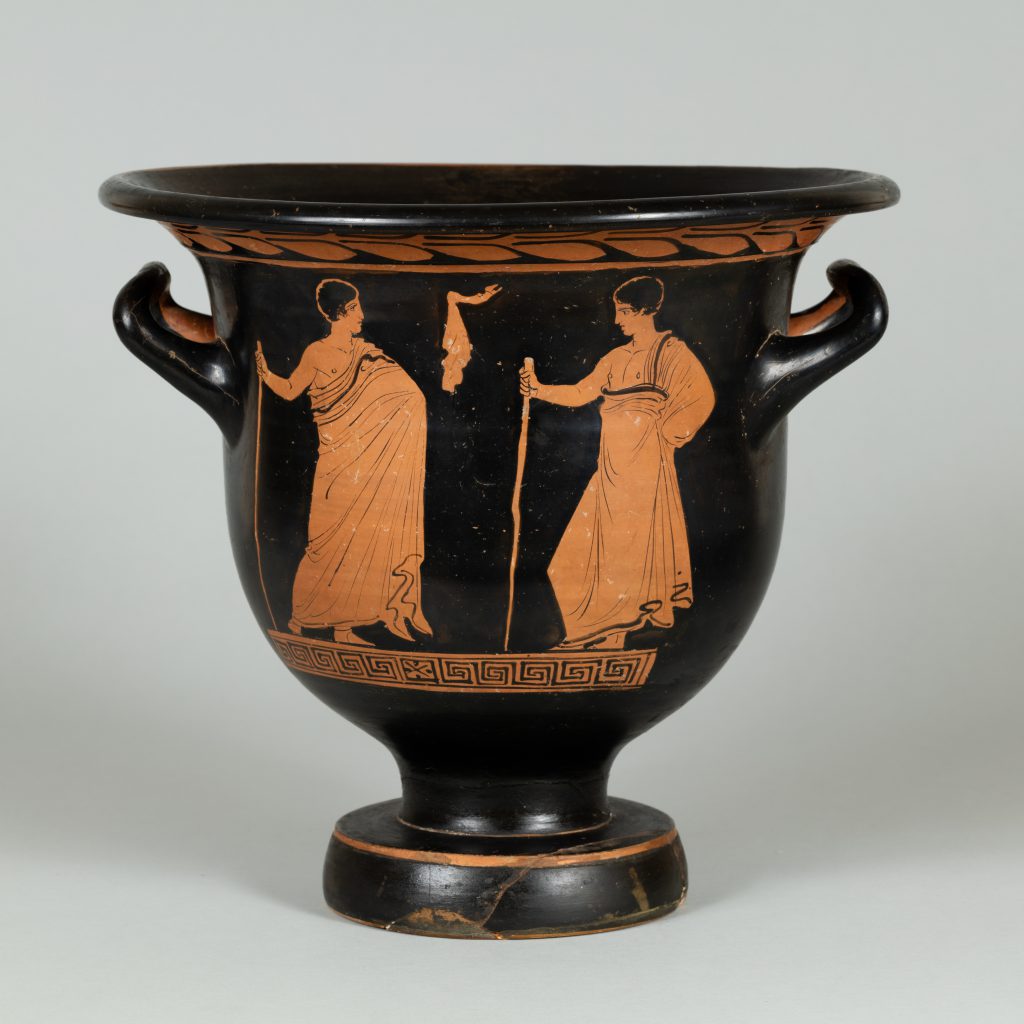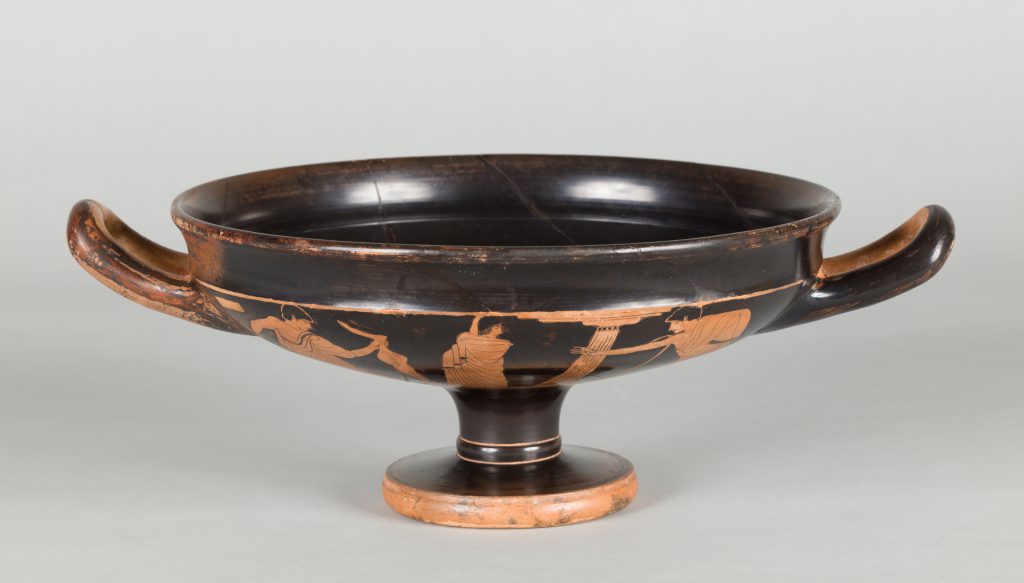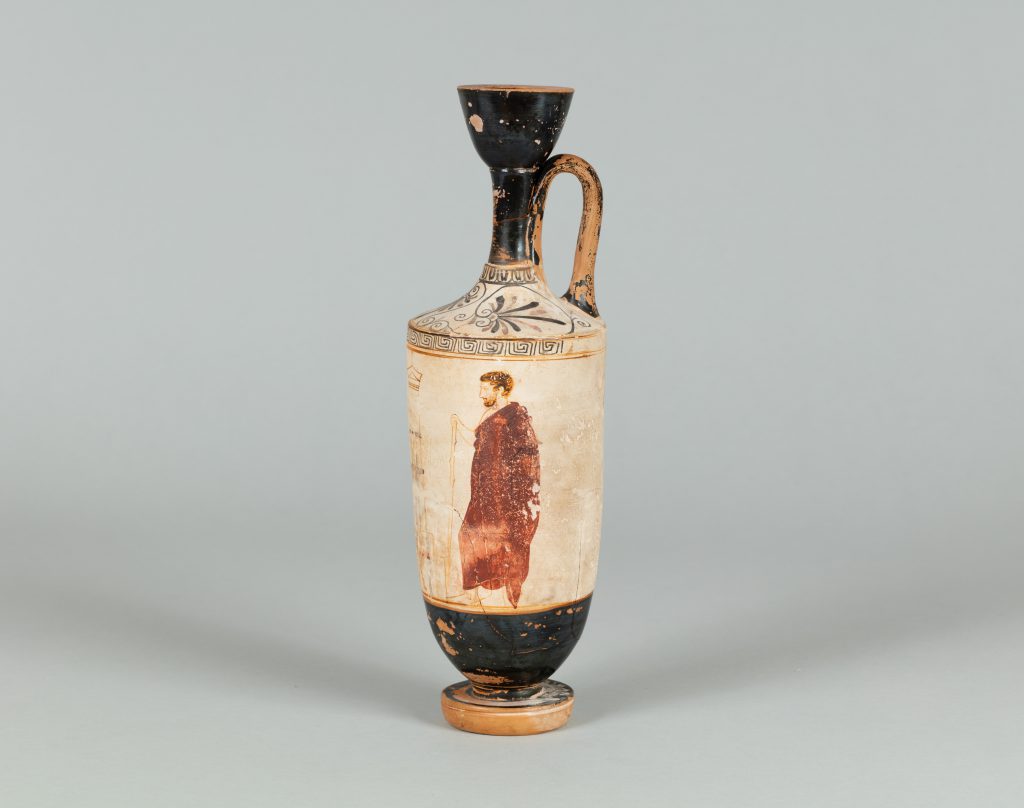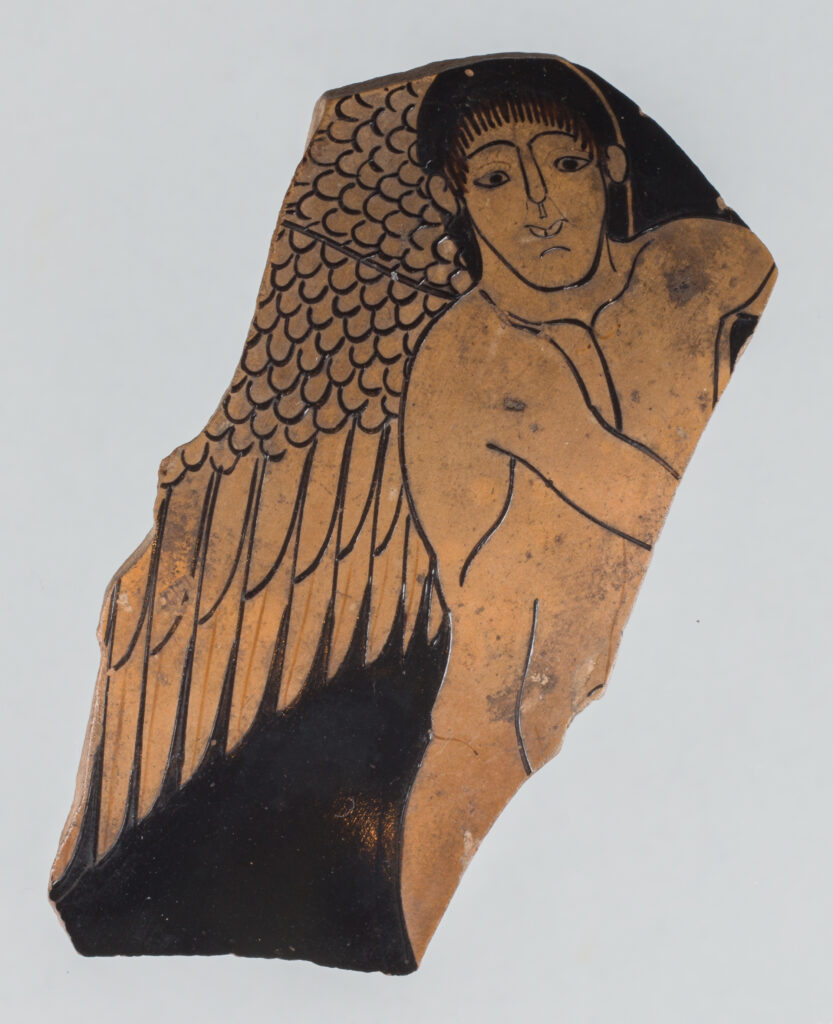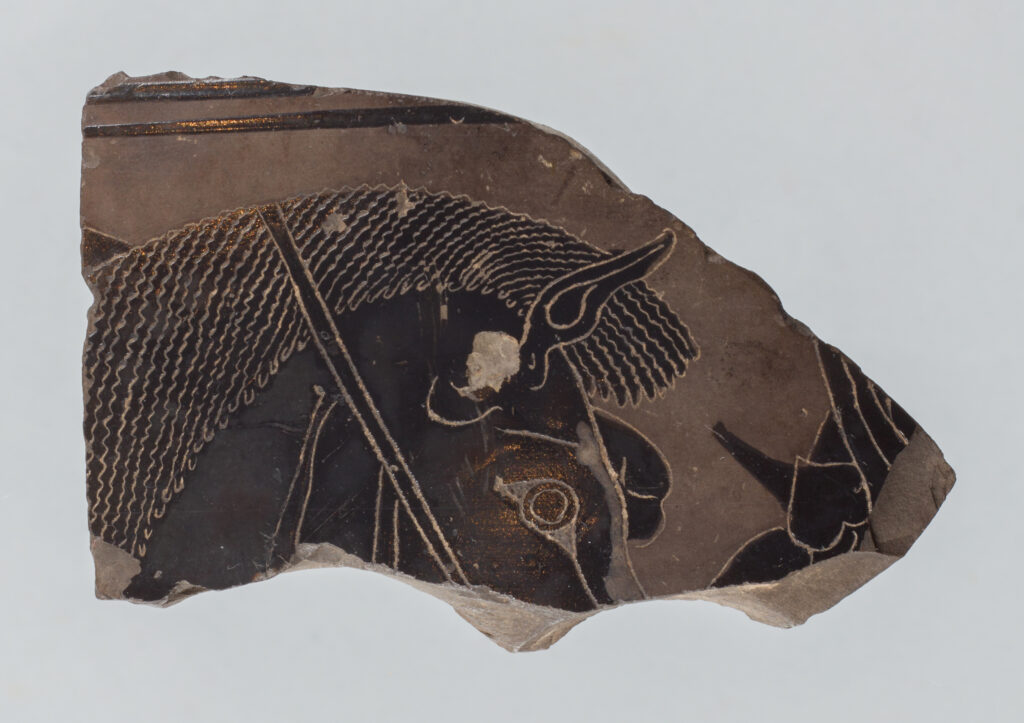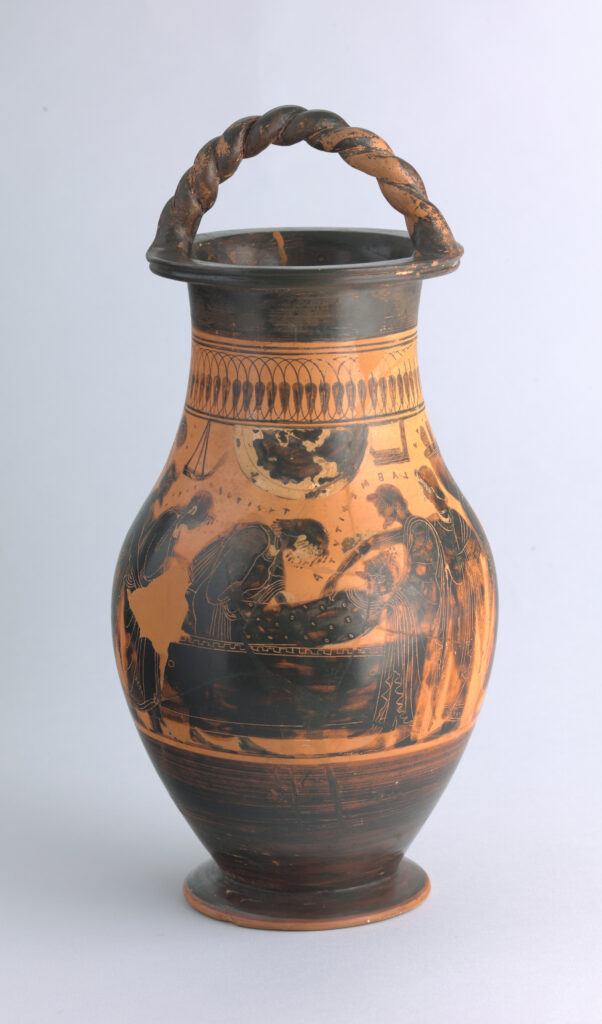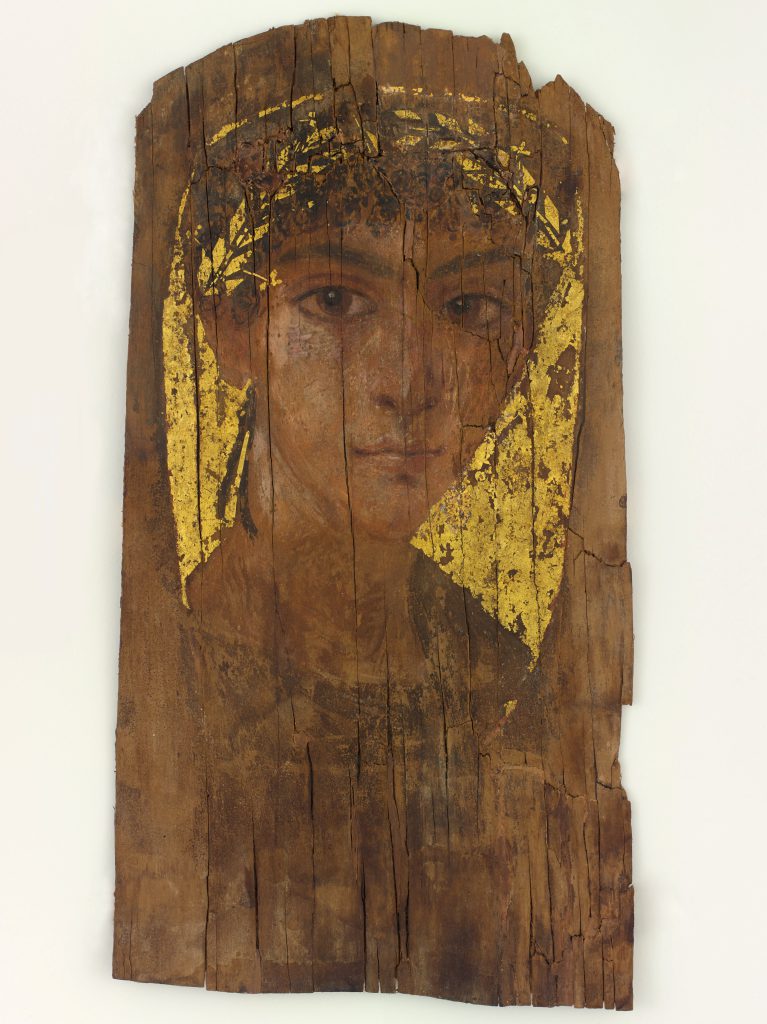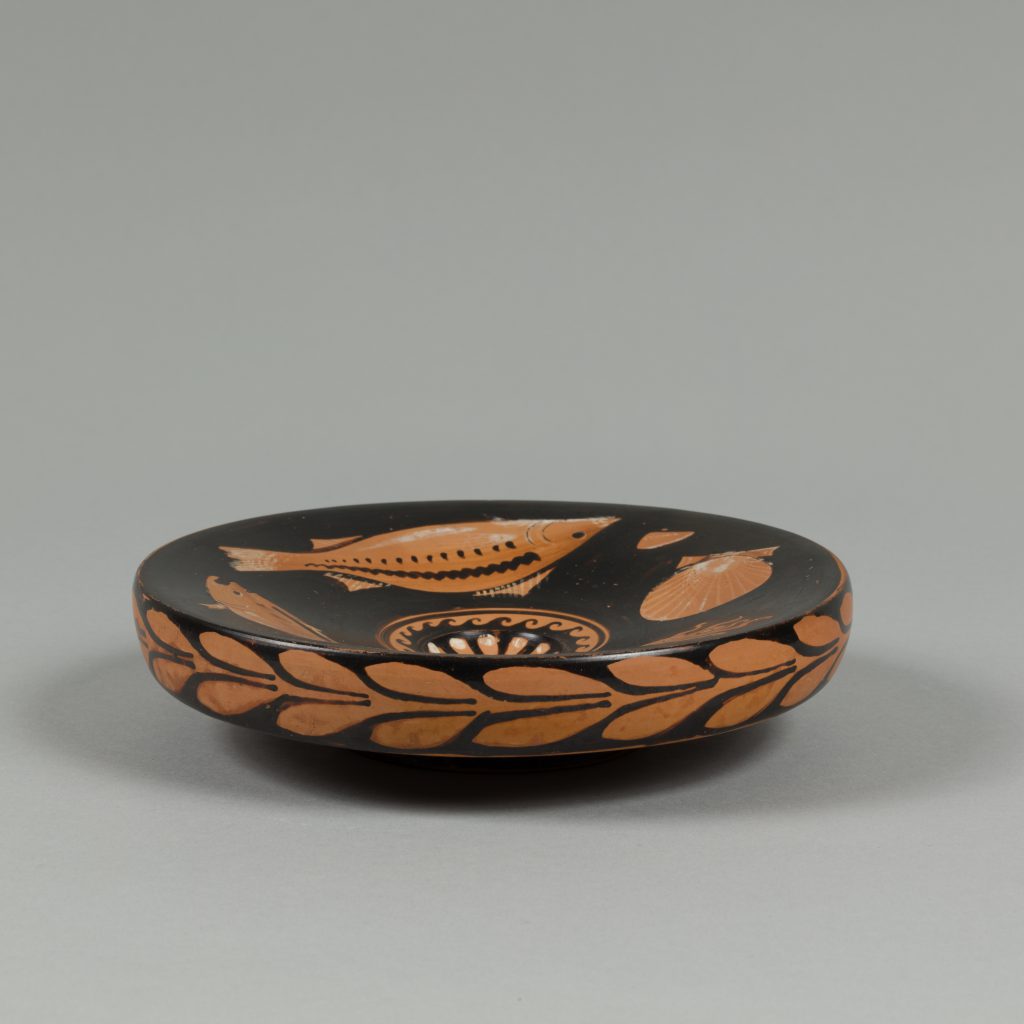

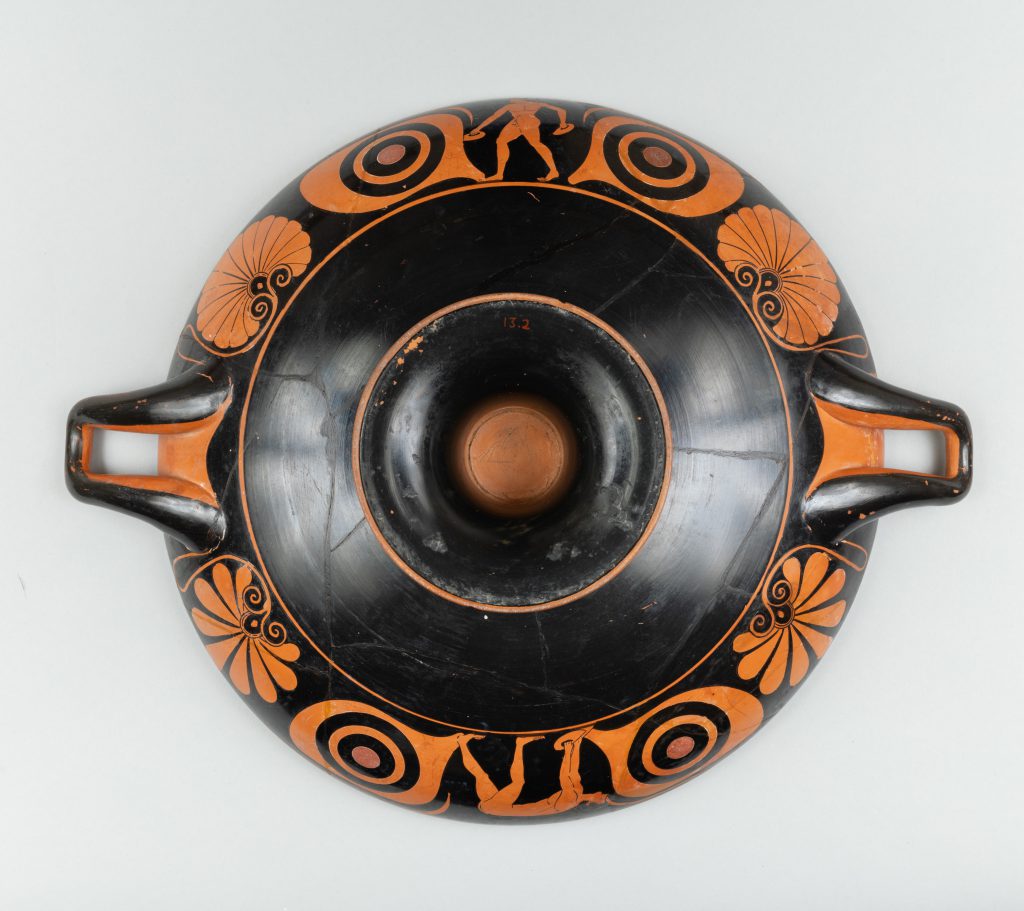
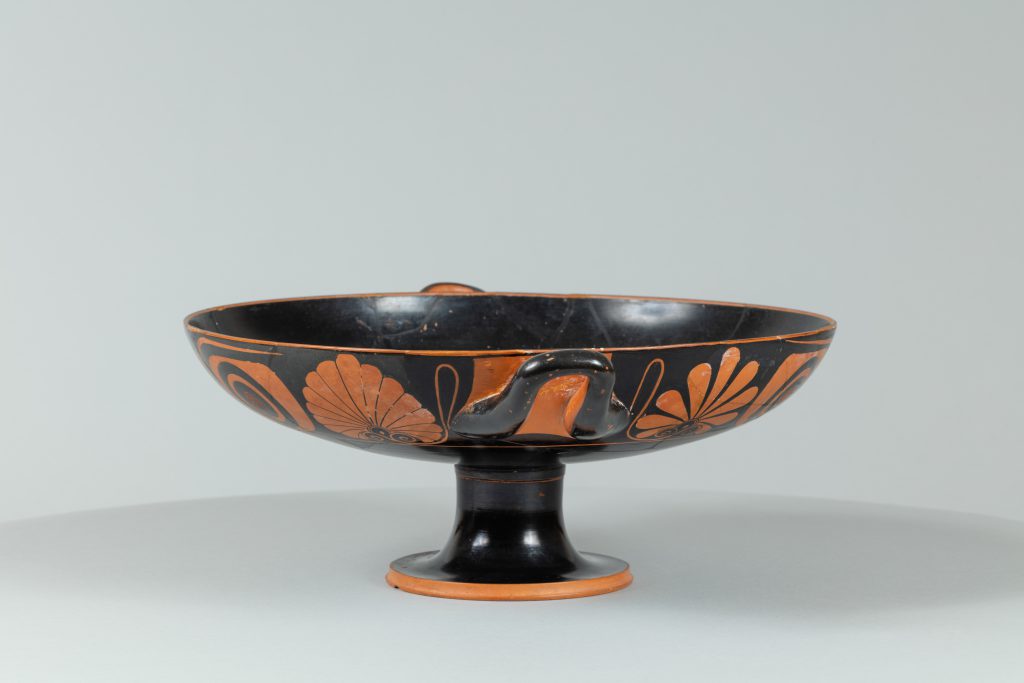

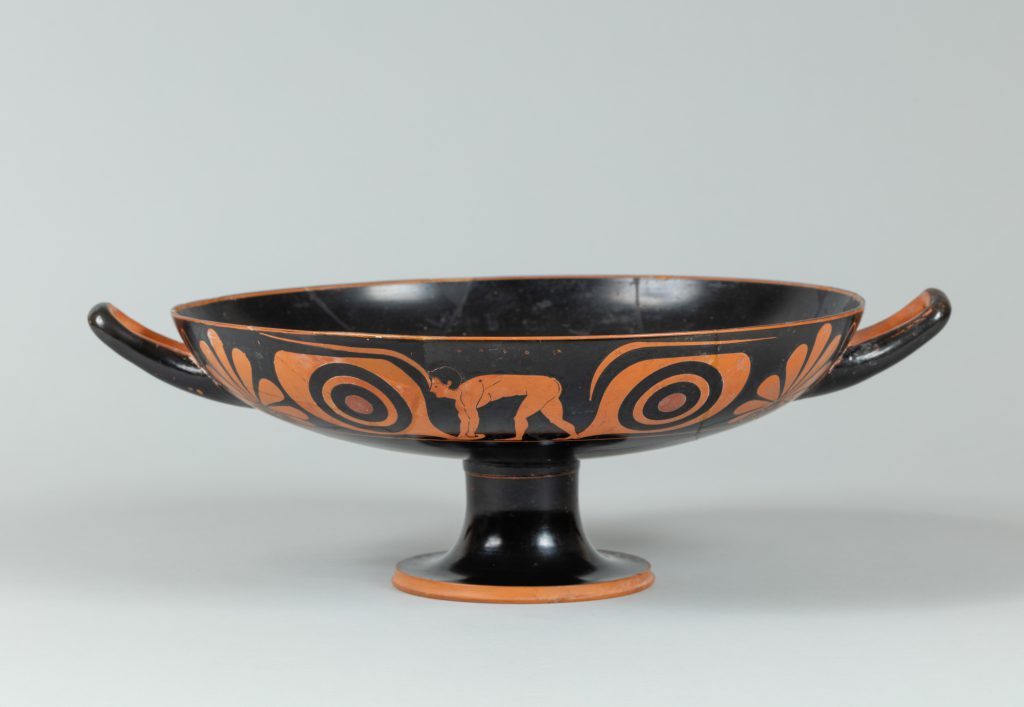


Gift of Edward Perry Warren, Esq., Honorary Degree 1926
1913.2This red-figure kylix, designed for drinking a mixture of wine and water, serves as one of the Museum’s earliest examples of Attic red-figure painting, having been created shortly after the technique’s development in 525 BCE. Crafted for the Greek symposium, its handles and bowl were designed for functionality while the geometric eyes and palmettes could have served an apotropaic purpose. Given Edward Perry Warren’s interest in the aesthetics of the male body, these depictions of male athletes—and the broader symposium context that celebrates Greek men—might have appealed to him.
Among the variety of forms and functions of vessels utilized for the Greek symposium, the amphora vessel was critical in the transportation of wine. The symposium operated as a highly prescribed space and time for male citizens to gather in celebration of their shared identity. Imbibing wine was central to symposium activities and regarded as a god-given gift. As such, there were certain accompanying rituals and customs, the most vital being the mixing of wine, preserved in the amphora, with water stored in the hydria. The wine and water were combined in the krater (vase), the vessel that serves as the focal point of the event in both the physical and metaphorical senses. The mixture would then be poured from an oinochoe (a serving vase) into drinking cups such as the kylix and kantharos.
Although women were often present to provide entertainment or serve as intimate companions, the emphasis on reinforcing the communal bonds of Greek men was not only central to the symposium but was often visually reinforced by the iconography of the vessels. The epithet “KALOS,” inscribed on this kylix above the male figure who folds at the waist on the exterior of the bowl, is a common feature across different vase types as it extols the beauty of the male body, a principal symposium theme. This bending figure and his counterpart, who strides to the left with an open stance, are likely depictions of the same athlete holding halteres, a form of stone weights, both before and after the long jump event of the Pentathlon.
Like the symposium, athletic culture in ancient Greece was another male-centric activity in which appreciation for the masculine body was fundamental. This notion is also manifested inside the bowl as the tondo portrays a nude youthful male who carries a helmet in his right hand and a large round shield in his left. This athlete is likely geared up for the hoplitodromos—a race in which men sprint with armor—to evoke the image, and thereby honor, of heavily armored Greek hoplite foot-soldiers.
The artist attribution of the so-called Bowdoin Eye Painter is derived from the treatment of the eye motif as identified by vase scholar John Beazley (1885–1970). Throughout collections across the globe, there are a total of forty-one vessels or vessel fragments that have been classified as, or associated with, the work of this artist, thirty of which were identified by Beazley himself.
Before 1913, collection of Edward Perry Warren; 1913, gifted to the Bowdoin College Museum of Art by Edward Perry Warren.
Collector
A testament to his impact as an influential twentieth-century American antiquities collector, Edward Perry Warren’s (1860–1928, H ’26) name is linked to hundreds of ancient objects housed in institutions across the United States, including more than five hundred works at the Bowdoin College Museum of Art alone.
